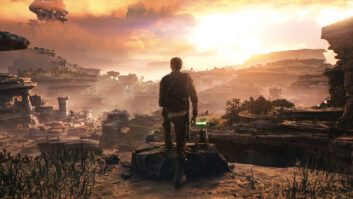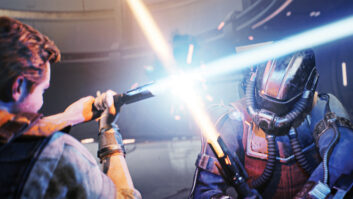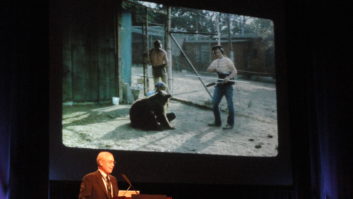
New York, NY (October 20, 2017)—Thursday morning, a packed special event, “Bearing Witness: The Music of Star Wars, Archiving Art and Technology,”featured Skywalker Sound’s Leslie Ann Jones and Dann Thompson as they detailed their efforts for Sony Classics’ re-release of soundtracks from the iconic film series, Episodes I through VI. Morphing into an archival and restoration mission for the first six films, this process was, in fact, a journey through the various recording platforms from 1977 to 2005.
“In April of 2012, we were asked to make a digital transfer of a half-inch master of a cue from Episode VI [Return of the Jedi] by Matt Wood, who apprenticed under [sound designer] Ben Burtt and is now the main sound supervisor for the Star Wars films,” explained Jones. The impetus was Sony Classics moving to re-release the soundtracks from Episode I through Episode VI on CD as well as vinyl alongside Episode VII.
“We wanted to look for the original elements in order to make 32-bit, 192 kHz masters,” she continued, “and the search really took several weeks to find out what were the appropriate two-track elements to use. At least for the first episodes—Episodes IV, V and VI—we were looking at two-track masters, production masters, EQ copies.”
The search included European versions with different EQ curves, productions from an old Star Wars radio show and more. “For the later episodes—Episodes I, II and III—they used the masters from Pat Sullivan [mastering engineer of all Star Wars record releases],” Jones explained, “so we were able to give Sony Classics what they needed and they released a whole box set including the vinyl. But it really got us thinking again about all this fantastic music. Not only archiving it—because it was mostly on analog tape and mag—but also it really could not be used in the format it was in. There are two reasons for archiving: to transfer things to the highest resolution possible and to repurpose, so people can enjoy them…and it was a monumental task. Fortunately, Dann has had loads of experience in mag and every format that we came into contact with.
“The idea was really to have a film version and a CD version [of the music] because they were not necessarily the same,” offered Jones. “[For the earliest films], the soundtracks were very much like the music that came out on the film. On the later episodes, they were not like the film at all. Many of the cues were cut from the film and were not heard in their entirety—even on the soundtrack records—because John [Williams, composer] wanted to create a listening experience on the soundtrack records. He would actually go into the mastering room with Pat and create different versions of the cues to make something [different]. That meant that the only copy of that was what was on CD; there was no edited master.”
After playing the main theme for the AES audience—successfully rescued from Episode IV‘s mag—Jones offered, “You know, we’re very lucky because we get to sit in the control room and listen to all this music. It’s pretty stunning. Just as a composition and separate from the film, John is just a brilliant writer. And to do six full-length, two-hour episodes, he finds a way to sneak in these themes…I’m just in awe of this experience.”
Next, the pair played a full composition, “Droid Invasion” from Episode I, previously unreleased. Following more audio examples of their restoration work, Jones posed, “Not only is this the music of Star Wars, but it is also the history of film-scoring technology. When you think about all the different formats that we have available to us, how people worked then and how they work now, it’s so different. So you should be able to hear some differences—1977 shouldn’t sound like 2007—so the cue [from Episode I] that you just heard has EQ, reverb, surround and LFE.”
For the full insight from Jones and Thompson, visit mobiltape.com to download a MP3 of the full presentation, which will be available in approximately one week following the 143rd AES Convention.







